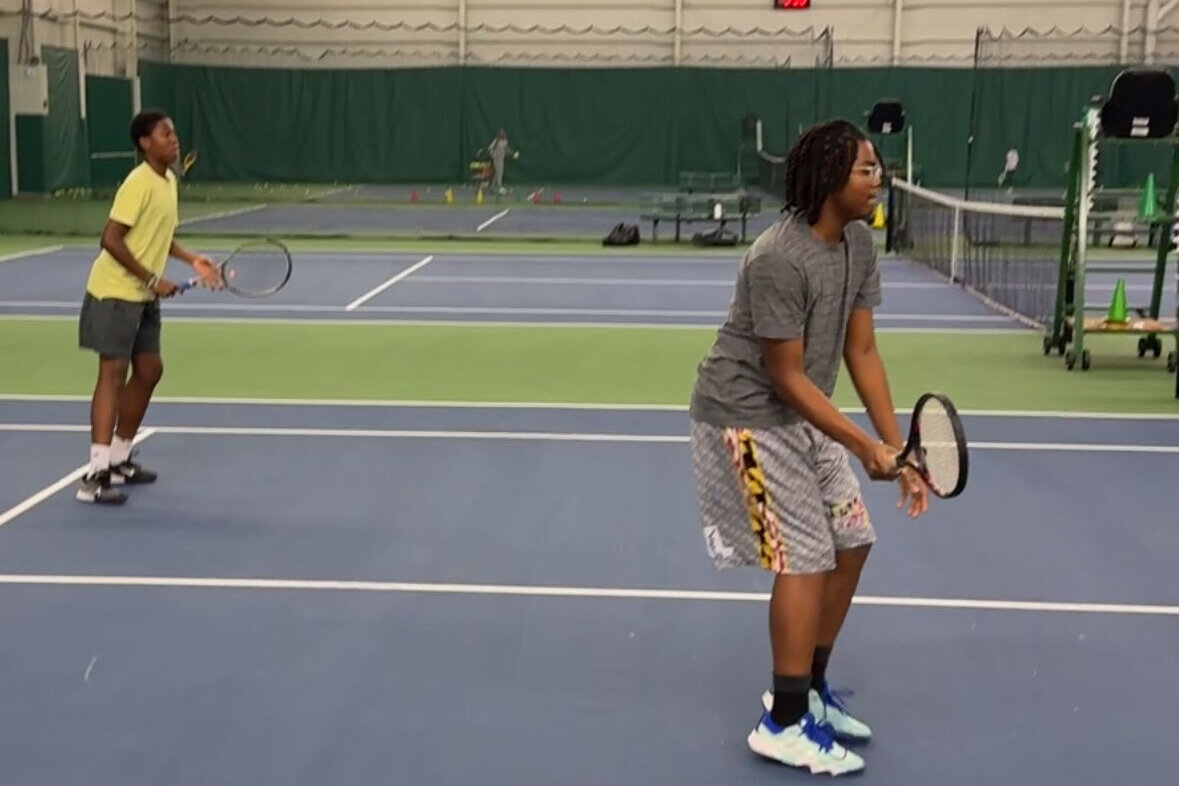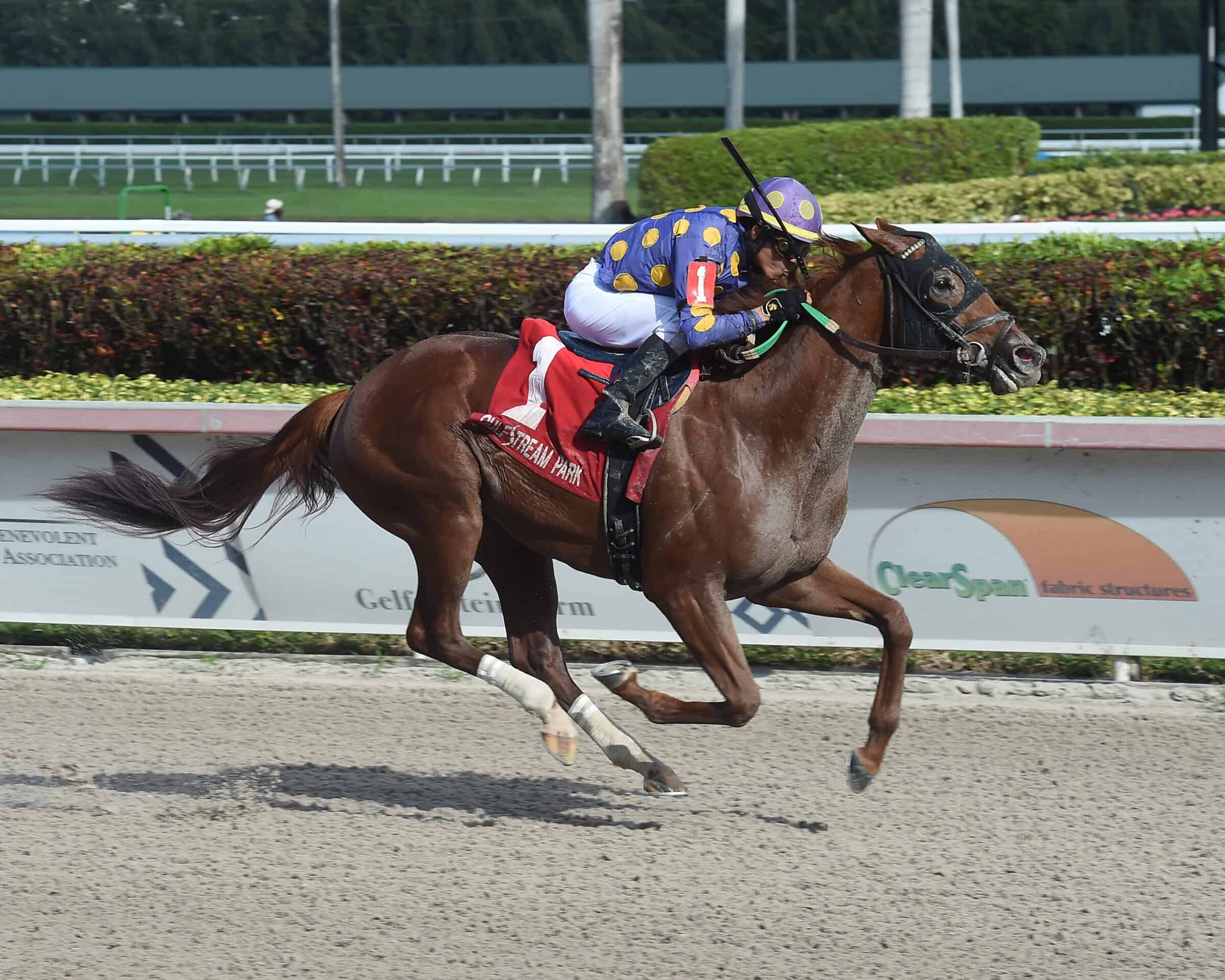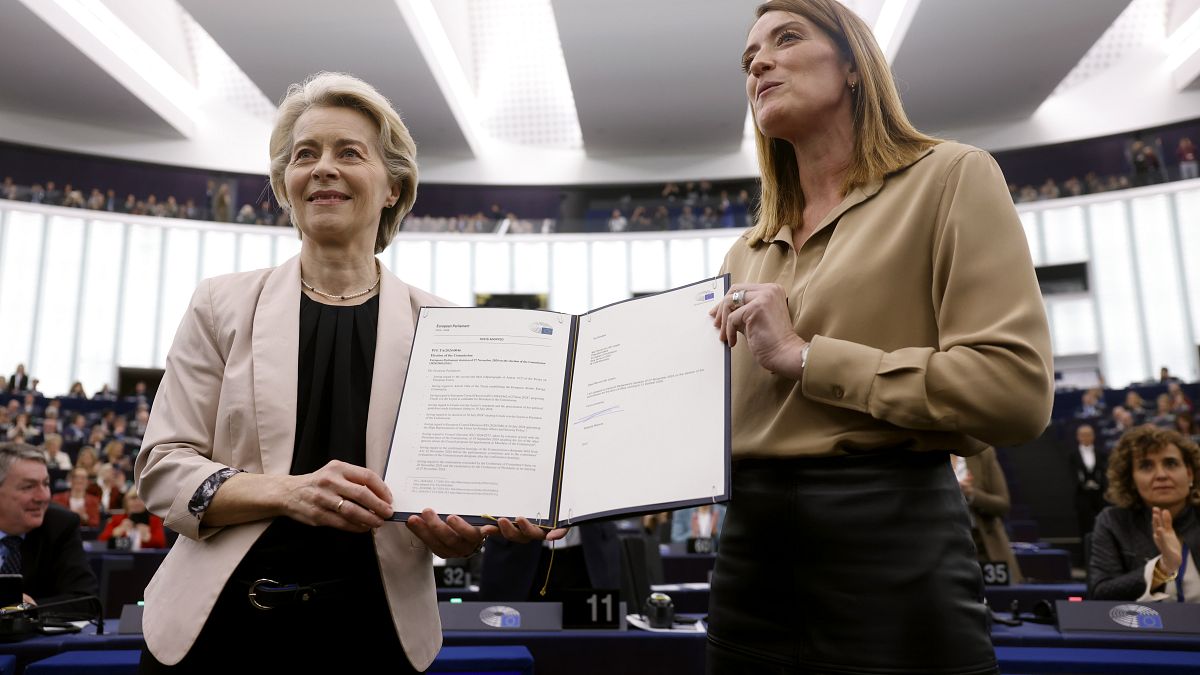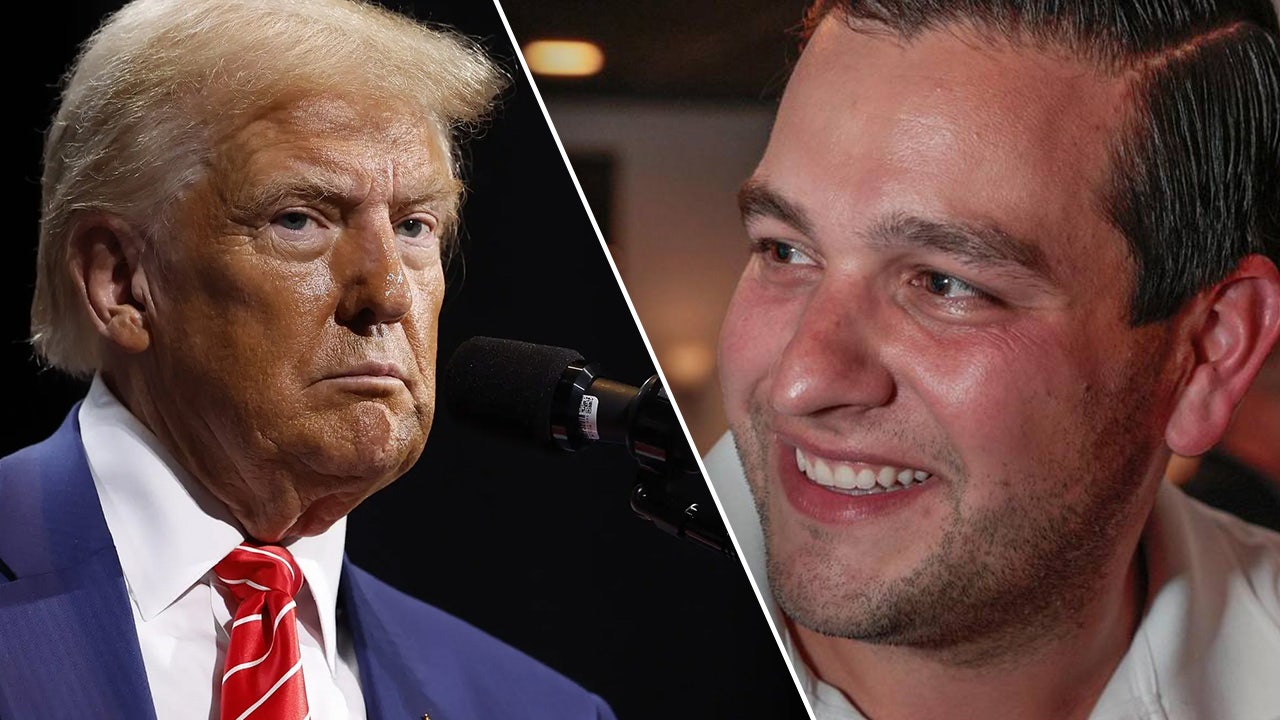Sports
ATP Tour Finals without the ‘Big Three’ brings hope and frustration to tennis’ sandwich generation

TURIN, Italy — This is what they have been waiting for.
Some really good tennis players have congregated here in northern Italy for the ATP Tour Finals, the most exclusive men’s tournament in the sport. Only the best eight players available receive an invitation.
Novak Djokovic, the greatest player of his era, and maybe any era, isn’t here. He’s 37, a combination of injured and exhausted, and trying to save himself for next year’s Grand Slams.
For the generation of players born in the middle and late 1990s, Djokovic’s absence represents a void they have dreamed of for most of their careers. For the first time since 2001, no member of the sport’s Big Three (Djokovic, Roger Federer and Rafael Nadal) is in the field for this event.
It is a harbinger that will before too long spread to the rest of the tennis calendar, removing the top layer of the sandwich that for years squeezed all those hot shots born in the years leading up to the 21st century out of Grand Slams and Masters 1000s. When Djokovic won the 2023 U.S. Open, he racked up the Big Three’s 66th title in 79 majors. They played each other so often in finals and semifinals that players born in the 1990s barely got the chance to lose in the late stages of tournaments, let alone imagine winning them.
“I think the mental coping that I was doing was, well, every time I was in the quarters I played Djokovic,” said Taylor Fritz, 27, at this year’s U.S. Open. Fritz would reach his first Grand Slam semifinal there, then his first final. He lost to Jannik Sinner, who, along with Carlos Alcaraz, is the avatar of how Djokovic and Nadal (who is retiring this month, at age 38, after the Davis Cup) have stuck around just long enough to complete their wreckage of the sandwich generation’s tennis lives.
Just when they thought the Big Three were going to stop hogging all the oxygen, a 19-year-old from Murcia and a 21-year-old from the Dolomites stepped onto Arthur Ashe Stadium in 2022 and played five sets of computer-game tennis that left the 1990s group breathless once more. In the two years since that quarterfinal, Alcaraz and Sinner have won six majors between them and both spent time as world No. 1, a position the latter currently occupies.

Jannik Sinner and Carlos Alcaraz have become used to holding trophies (Lintao Zhang / Getty Images)
Djokovic won the other majors. The sandwich squeezed once more.
“Those guys are I guess younger, but they have done better than, let’s say, the ’90s kids, whatever you or I want to call them,” Casper Ruud, 25, a three-time Grand Slam finalist, said in a news conference on Monday. Ruud lost to Alcaraz in the final of that fateful 2022 U.S. Open; Nadal and Djokovic annihilated him at Roland Garros in successive years.
“They have been, this year, almost in a league of their own.”

GO DEEPER
‘I don’t need the lights on me’: Casper Ruud steps out of the shadows in Turin
This isn’t how tennis usually goes.
There was an interregnum between the Pete Sampras/Andre Agassi dominance of the 1990s and the emergence of Federer, and then Nadal and Djokovic. There was time for the Patrick Rafters and Marat Safins and Carlos Moyas and Juan Carlos Ferreros to get a slice of the limelight. Later, Andy Murray and Stan Wawrinka fought their way to major titles; Juan Martin del Potro and Marin Cilic grabbed opportunities when they came.
There is unlikely to be another interregnum for some time, but there are slivers of that kind of light. Ruud registered his first win over Alcaraz in five attempts on Monday here, taking advantage of an under-the-weather opponent playing in his worst environment — indoors, on a fast court. After, he acknowledged that Alcaraz’s error-strewn match contributed mightily to his success as he tries to play more aggressively to rise to the heights that the Spaniard and Sinner have taken tennis.
“It’s not the nature of my game,” Ruud said. “I’m hesitating a little bit when I need to be too aggressive. But I’m trying.”
“Try again. Fail again. Fail better,” Samuel Beckett famously wrote.
That’s about what tennis has become for Ruud’s generation, which also includes Fritz, Alexander Zverev, Daniil Medvedev, and Andrey Rublev, all of whom are here in Turin.

Andrey Rublev is among the group of players trying to step out of the shadow of the Big Three (Marco Bertorello / AFP via Getty Images)
Some appear to be managing the process better than others.
Medvedev, the most successful member of the group, is in the midst of an intense struggle to find motivation. Mentally and physically exhausted, he has reached the end of his strings. “Every practice is a struggle, every match is a struggle,” the six-time Grand Slam finalist and 2021 U.S. Open champion said in a news conference on Sunday, after losing to Fritz in straight sets.
Not so long ago, Medvedev was blowing even Sinner away, racking up six straight wins with his beguiling defense and serve. Since then, a shoulder issue, changes in balls, and the Italian’s development have knocked him back. Alcaraz’s ability to dominate the front of the court has negated the deep return strategy that Medvedev used to put so many opponents out of joint.
Medvedev, 28, is a former world No. 1. Zverev, 27, is the current world No. 2 and has won this tournament twice, but he says he knows that he holds that position on the ATP computer alone.
Being at the top of their sport can make them feel like also-rans. Tennis will do that to you.
Zverev took on another leading member of the sandwich generation on Monday night in Rublev, who is 28 and is always teetering on the edge of another unpleasant incident of self-flagellation. He has bloodied himself multiple times in the past year. Like salt being rubbed into wounds, the match was delayed by about 20 minutes while the ATP awarded Sinner the trophy for finishing the year as the world No. 1.
There probably was no good time for the ceremony to happen. This Tour Finals is basically a sandwich generation convention. It was going to be awkward no matter what.

GO DEEPER
Andrey Rublev: A tennis hothead desperately searching for peace
Like Ruud and Fritz, Zverev has embraced the challenge of trying to match Alcaraz and Sinner, if not every week or every season, but at least during a single two-week stretch of seven matches when he can win a so-far elusive Grand Slam. He is an Olympic gold medalist but has said all the other tournaments he has won will ultimately mean nothing unless he ticks off one of the four majors.
To that end, Zverev has effectively let go of any results he might achieve this fall. Last month, he practised for an hour every day after his matches as he rolled to the title in the year’s last important big tournament, the Paris Masters.
He said he was happy with the outcome. He’d rather win than not. Who wouldn’t? But he remains focused almost singularly on improvement, and if that meant taking to the court in Paris on weary legs, so be it. The 2025 Australian Open was a little more than two months away then and is closer now; Zverev wants to be playing the kind of tennis the game demands by then.

Alexander Zverev remains in search of an elusive Grand Slam (Marco Bertorello / AFP via Getty Images)
Like Ruud, he believes he has to play more aggressively to have a chance to stay on the court with Sinner and Alcaraz.
“When they get an easy ball, when they’re in an attacking position, 90 percent of the time the point is over, whether it’s a winner or an unforced error,” he said. “That’s how hard they hit the ball, that’s how aggressive they are. I think in that aspect, I can improve. That’s what I’m trying to do.”
After the Sinner show, he did it very well yesterday against Rublev to win 6-4, 6-4, pushing into the court and practically throwing his racket at the ball nearly every time he got the chance to put away a point, even sometimes when the chances weren’t there.
None of this is to suggest that all hope is lost and that Sinner and Alcaraz will win everything important for a decade. That just doesn’t happen. As Ruud noted on Monday after his win, “They’re also human. I mean, they will lose matches, just not that many during a year.”
Sinner may yet be stopped by off-court forces greater than any player. The World Anti-Doping Agency (WADA) is seeking a ban of one or two years in its appeal of his doping case, which it submitted to the Court of Arbitration for Sport (CAS) in September.

GO DEEPER
Jannik Sinner’s doping case explained: What WADA appeal means and what is at stake for tennis
Earlier this year, Sinner twice tested positive for clostebol, an anabolic steroid. Three tribunals convened by the tennis anti-doping authorities accepted his explanation that the substance inadvertently ended up in his system after his physiotherapist used it to treat a cut on his own finger, then gave Sinner a massage. WADA, too, accepts this explanation but believes he should bear some responsibility for the actions of his support team.
Until then, the players will have to keep trying to figure out how to topple him and Alcaraz on the tennis court.
Today (Tuesday), it’s Fritz’s turn, as he and Sinner will duel in a rematch of September’s U.S. Open final, in which Sinner won by doing what Fritz does, but doing it a bit better — and by tweaking his return position when his opponent gathered some momentum.
Fritz hasn’t been hanging around the top 10 since the late 20-teens, like his European peers. He’s only recently become a serious threat with a ticking clock, trying to max out his potential before it’s too late.
(Top photo: Nicolo Campo / LightRocket via Getty Images)

Sports
'Sopranos' star says she wanted to 'go after' 76ers' Joel Embiid for elbowing Knicks guard during playoff game
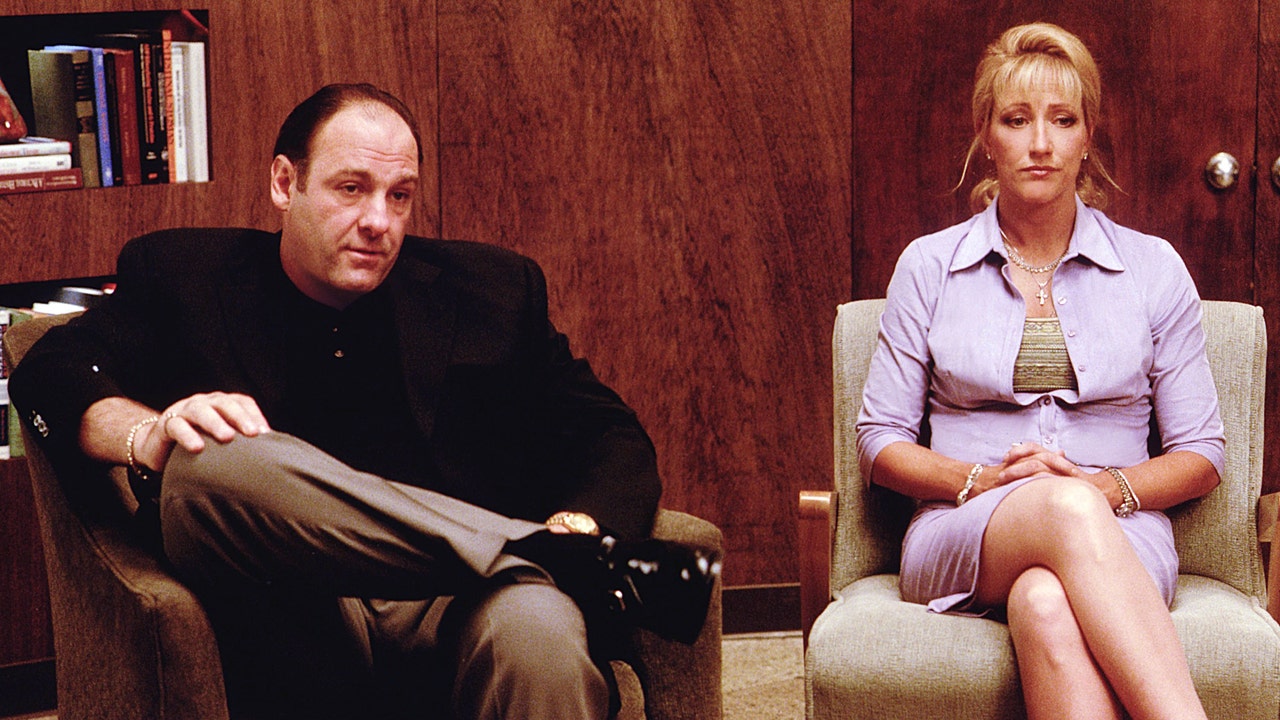
Don’t mess with Carmela Soprano.
Edie Falco, the actress who played the wife of Tony Soprano on the acclaimed HBO series “The Sopranos,” revealed in an interview with New York Knicks stars Jalen Brunson and Josh Hart that she was really upset with Philadelphia 76ers center Joel Embiid during the playoffs.
Edie Falco as Carmela Soprano in “The Sopranos.” (HBO)
Falco said she was about to go after Embiid after the big man elbowed Brunson in the first round of the playoffs last season.
“Joel Embiid, he’s mean,” Falco said in the latest episode of the “Roommates Show.” “He like elbowed you in a game last year and I was going to go after him. I mean that’s how bad it was. And then I think I’ve seen you guys play since then and you guys are all like cool with each other. I’m like, ‘You don’t hold a grudge?’”
KNICKS’ MIKAL BRIDGES OUTDUELS SPURS’ VICTOR WEMBANYAMA; KNICKS HOLD ON FOR NARROW VICTORY

New York Knicks guard Jalen Brunson in action against the 76ers during the NBA playoffs at the Wells Fargo Center in Philadelphia, May 2, 2024. (Bill Streicher-USA Today Sports)
Brunson said he’s known Embiid since they came into the league and made clear that it wasn’t cool of him to throw the elbow, but whatever ill will there was between them at the time of the heated moment was gone.
The Knicks got the last laugh anyway, as they defeated the 76ers in the first round and eventually lost to the Indiana Pacers in the playoffs.
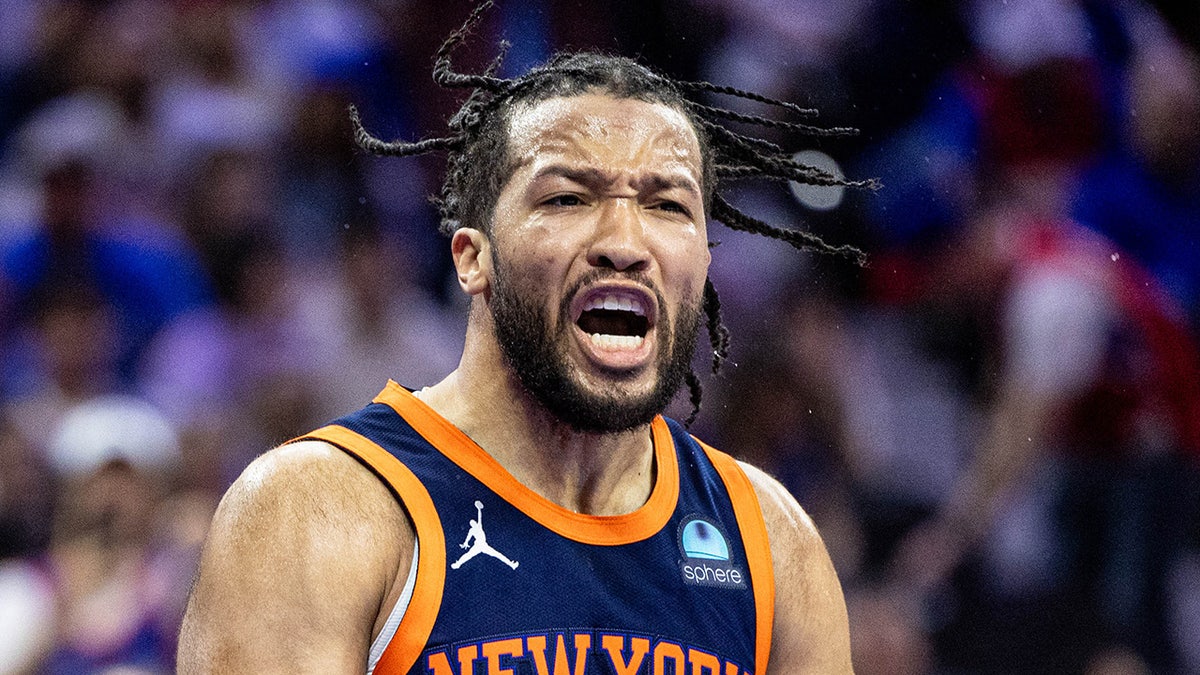
New York Knicks guard Jalen Brunson after scoring against the Sixers during the NBA playoffs at the Wells Fargo Center in Philadelphia, April 28, 2024. (Bill Streicher-USA Today Sports)
Falco is long removed from her “Sopranos” days. She’s set for a “Nurse Jackie” sequel on Amazon Prime Video.
Follow Fox News Digital’s sports coverage on X and subscribe to the Fox News Sports Huddle newsletter.
Sports
Joan Benoit Samuelson's 1984 Olympic marathon win was a game-changer for women's sports

As Joan Benoit Samuelson negotiated the hairpin turn into the Coliseum tunnel, ran past the USC locker room and onto the stadium’s red synthetic track for the final 400 meters of the 1984 Olympic marathon, her focus wasn’t only on finishing, but on finishing strong.
Women never had been allowed to run farther than 1,500 meters in the Olympics because the Games’ all-male guardians long harbored antiquated views of femininity and what the female body could do. If Samuelson struggled to the line, or worse yet dropped to the ground after crossing it, that would validate those views and set back for years the fight for gender equality in the Olympics.
“They might have taken the Olympic marathon off the schedule,” Samuelson said by phone two days before Thanksgiving. “This is an elite athlete struggling to finish a marathon. It never happened, thank goodness. But that could have changed the course of history for women’s marathoning.”
Actually, that race did change the course of history because nothing remained the same after a joyous Samuelson, wearing a wide smile and waving her white cap to the sold-out crowd, crossed the finish line. This year marked the 40th anniversary of that victory, and when the Olympics return to Los Angeles in four years, the Games will be different in many ways because of it.
Joan Benoit celebrates on the top step of the podium after winning gold in the women’s marathon at the L.A. Olympic Games on Aug. 5, 1984.
(Lenny Ignelzi / Associated Press)
Since 1984, the number of Summer Olympic events for women has nearly tripled, to 151, while last summer’s Paris Games was the first to reach gender parity, with women accounting for half of the 10,500 athletes in France. Fittingly the women’s marathon was given a place of honor on the calendar there, run as the final event of the track and field competition and one of the last medal events of the Games.
None of that seemed likely — or even possible — before Samuelson’s win.
“I sort of use marathoning as a way to storytell,” Samuelson said from her home in Maine. “And I tell people LA 84 and the first women’s Olympic marathon was certainly the biggest win of my life.”
It was life-changing for many other women as well.
Until 1960, the longest Olympic track race for women was 200 meters. The 1,500 meters was added in 1972, yet it wasn’t until the L.A. Games that the leaders of the International Olympic Committee, who had long cited rampant myths and dubious sports-medicine studies about the dangers of exercise for women, approved the addition of two distance races, the 3,000 meters and marathon.
Which isn’t to say women had never run long distances in the Olympics. At the first modern Games in Athens in 1896, a Greek woman named Stamata Revithi, denied a place on the starting line on race day, ran the course alone a day later, finishing in 5 hours and 30 minutes, an accomplishment witnesses confirmed in writing.
Her performance was better than at least seven of the 17 male runners, who didn’t complete the race. But she was barred from entering Panathenaic Stadium and her achievement was never recognized.
Eighty-eight years passed before a woman was allowed to run the Olympic marathon.
“There are men that are raised with resentment for women, except for their own mothers. That’s just a part of their nature,” Hall of Fame track coach Bob Larsen said. “A lot of good things have happened in the last couple of decades. Old men are passing away and opening doors [for] people who have a more modern understanding of what women are capable of.”

In between Revithi and Samuelson, women routinely were banned even from public races like the Boston Marathon, which didn’t allow females to run officially until 1972. Even then, women had to bring a doctor’s note declaring them fit to run, said Maggie Mertens, author of “Better, Faster, Farther: How Running Changed Everything We Know About Women.”
Seven years later Norway’s Grete Waitz became the first woman to break 2:30 in the marathon, running 2:27.32 in New York, a time that would have been good for second in the elite men’s race in Chicago that same day.
Because of that, Samuelson said she hardly was blazing a trail in L.A. Instead she was running in the wake of pioneers such as Kathrine Switzer, Bobbi Gibb and Waitz.
“I ran because there was an opportunity, not because I wanted to prove that women could run marathons,” said Samuelson, who still is running at 67. “Women had been proving themselves long before the ’84 Games.
“If anything, maybe my win inspired women to realize that if marathoning were a metaphor for life, anything in life is possible.”

Joan Benoit Samuelson receives a laurel wreath after winning the Boston Marathon in April 1983. At left, then-Lt. Gov. John Kerry.
(Associated Press)
Still, when Samuelson beat Waitz in Los Angeles, running in prime time during a race that was beamed to television viewers around the world, “that was the game-changer,” Switzer, the first woman to run Boston as an official competitor, told Mertens.
“When people saw it on television … they said, ‘Oh my God, women can do anything.’”
A barrier had fallen and there was no going back.
“You could make the argument that in women’s sports in general, we had to see, we had to have these women prove on the biggest stage possible that they were capable so that these gatekeepers would let women come in and play sports and be part of this world,” Mertens said. “I think it really did help burst open those ideas about what we could do and what we could see.”
As a result, the elite runners who have followed in Samuelson’s footsteps never have known a world in which women were barred from long-distance races.
“I grew up believing that women ran the marathon and that it wasn’t a big deal,” said Kara Goucher, a two-time Olympian and a world championship silver medalist who was 6 when Samuelson won in L.A. “I grew up seeing women run the marathon as the norm. That 100% is a credit to Joanie going out there on the world’s biggest stage and normalizing it.”
Paige Wood, a former U.S. marathon champion, said her high school coach was inspired to run marathons by Samuelson’s story and passed that inspiration on to her runners.
“She used her as an example of why we shouldn’t put any mental limitations on ourselves or shouldn’t let others tell us what we are capable of,” Wood said.
Wood was born in 1996 and remembers her mom, who was very athletic, saying that cheerleading was the only sport available to her in high school in the pre-Samuelson days.
“It’s undeniable, right? The courage she gave other women to start running and start competing,” Wood continued. “The trickle-down effect, it’s not even limited to running. It affected all sports and just made women less afraid to be athletic and try all different sports.”
A year after Samuelson’s victory, the U.S. women’s soccer team played its first game, although it was more than a decade before the WNBA, the country’s first professional women’s league. There are now leagues in six other sports, from ice hockey and lacrosse to rugby and volleyball, and female athletes like Caitlin Clark, Alex Morgan, Simone Biles and Katie Ledecky are household names.

Joan Benoit Samuelson, first women’s Olympics marathon winner, walks from the finish line after running in the 2019 Boston Marathon.
(Winslow Townson / Associated Press)
Last summer in Paris, Sifan Hassan won the women’s marathon in an Olympic-record 2:22.55 after taking bronze in both the 5,000 and 10,000 meters, events that weren’t even on the Olympic calendar when Samuelson won her race. Two months later Kenyan Ruth Chepng’etich became the first woman to run under 2:10 when she won the Chicago Marathon in 2:09:56, averaging 4:57 a mile.
Until 1970, two years before the Boston Marathon was opened to women, only one man had broken 2:10 in the race.
“It says so much about sport and the way that humans don’t quite know what we’re capable of until we do it,” Mertens said. “We’re going to keep pushing those goalposts back. We’ve come so far, and I think that’s more to do with just having the opportunities and know that there aren’t really limits.
“That’s the power of sports. These people are inspiring us; [they] help us see women as powerful athletes but also powerful in politics, as leaders.”
Did Samuelson make that happen? Or did she simply make it happen faster?
“You’d have to decide whether it was a huge defining moment or just a general wave of athletic events that made this possible,” Larsen said. “You know, the more times you put someone up at the plate, sooner or later somebody’s going to hit it out.
“Now it’s acceptable to have a woman running for president. So things are happening and it’s more acceptable to the general public. Was Joanie a big part of it? I would think so.”
Sports
Jets QB Aaron Rodgers: Without leaks ‘it will be a little easier to win’

Less than a week after The Athletic published a story detailing dysfunction within the New York Jets organization, quarterback Aaron Rodgers used his latest appearance on “The Pat McAfee Show” to address leaks to journalists.
“There’s definitely some leaks,” Rodgers said during his Monday appearance. “There’s people that have relationships with people in the media. There’s motivations for writing stories it seems like and nothing is surprising at this point. There’s some interesting things that go on in every organization — some that would like to be left uncovered but it seems like here those don’t always get left uncovered. They get covered.”
Rodgers also mused on the show about the possibility of getting released after the season, and joked at the recent reporting of owner Woody Johnson receiving team input from his teenage sons.
“Being released would be a first; being released by a teenager, that would also be a first,” Rodgers said with a laugh during his weekly spot on the show.
Those comments came as part of a discussion of The Athletic’s story about Johnson’s perceived mismanagement of the franchise. Among the details contained in that piece: “Madden” video game ratings led Johnson to nix a trade for wide receiver Jerry Jeudy, and the owners’ teenage sons have been increasingly influential when it comes to Johnson’s decisions.
Later during the “McAfee” appearance, Rodgers added: “It can’t be the norm that there’s so many leaks and so many people continue to have conversations whether its getting some sort of angle of revenge or even with people who are still in the building. The standard needs to be you are not creating questions for other people all the time. Leaking these things doesn’t become the standard.
“Obviously, what’s best for the Jets is not having these types of leaks all the time. When that gets figured out, it will be a little easier to win. That doesn’t have a direct impact on the players on the field but it does have an impact on the culture and the chemistry and the overall energy of the building. That’s what needs to get better.”
On Sunday, the Jets fell to 4-11 following a home loss to the Los Angeles Rams. Rodgers, a four-time NFL MVP, has played in every game this season after an Achilles injury limited him to just the first four snaps in 2023. He has thrown for 3,511 yards, 24 touchdowns and eight interceptions this season. Last month, The Athletic reported that Johnson suggested benching Rodgers in September. With two games remaining in this season, the 41-year-old’s future with the team remains in question.
In October, Johnson fired head coach Robert Saleh, the same day offensive coordinator Nathaniel Hackett was demoted as the team’s play caller. One week later, wide receiver Davante Adams — a close friend of Rodgers’ — was acquired via trade. In November, general manager Joe Douglas was dismissed. The team has already started its search to fill the open GM spot.
Required reading
(Photo: Emilee Chinn / Getty Images)
-
/cdn.vox-cdn.com/uploads/chorus_asset/file/24924653/236780_Google_AntiTrust_Trial_Custom_Art_CVirginia__0003_1.png)
/cdn.vox-cdn.com/uploads/chorus_asset/file/24924653/236780_Google_AntiTrust_Trial_Custom_Art_CVirginia__0003_1.png) Technology5 days ago
Technology5 days agoGoogle’s counteroffer to the government trying to break it up is unbundling Android apps
-

 News6 days ago
News6 days agoNovo Nordisk shares tumble as weight-loss drug trial data disappoints
-

 Politics6 days ago
Politics6 days agoIllegal immigrant sexually abused child in the U.S. after being removed from the country five times
-

 Entertainment7 days ago
Entertainment7 days ago'It's a little holiday gift': Inside the Weeknd's free Santa Monica show for his biggest fans
-

 Lifestyle7 days ago
Lifestyle7 days agoThink you can't dance? Get up and try these tips in our comic. We dare you!
-

 Technology1 week ago
Technology1 week agoFox News AI Newsletter: OpenAI responds to Elon Musk's lawsuit
-
/cdn.vox-cdn.com/uploads/chorus_asset/file/25672934/Metaphor_Key_Art_Horizontal.png)
/cdn.vox-cdn.com/uploads/chorus_asset/file/25672934/Metaphor_Key_Art_Horizontal.png) Technology2 days ago
Technology2 days agoThere’s a reason Metaphor: ReFantanzio’s battle music sounds as cool as it does
-

 News3 days ago
News3 days agoFrance’s new premier selects Eric Lombard as finance minister





